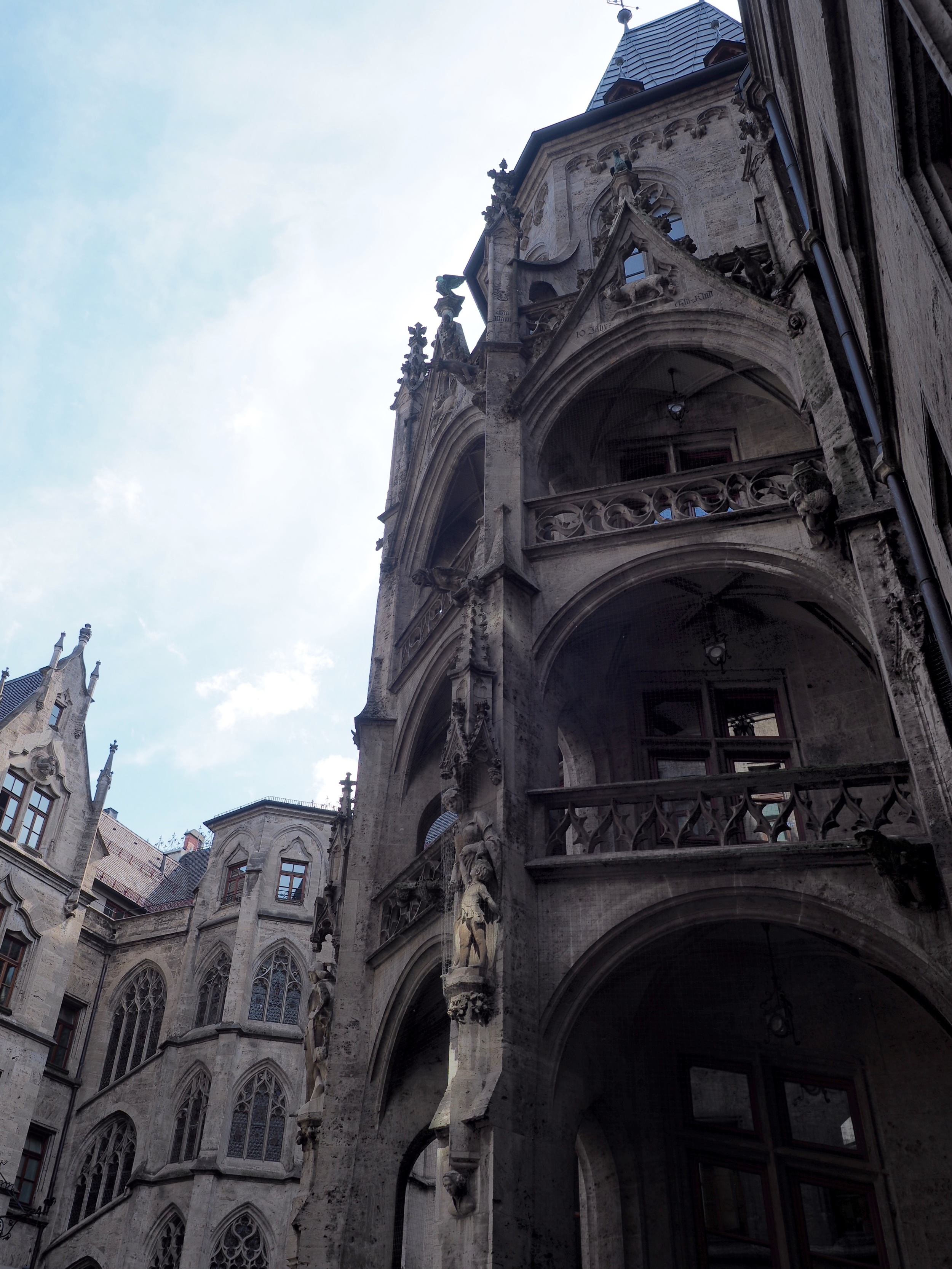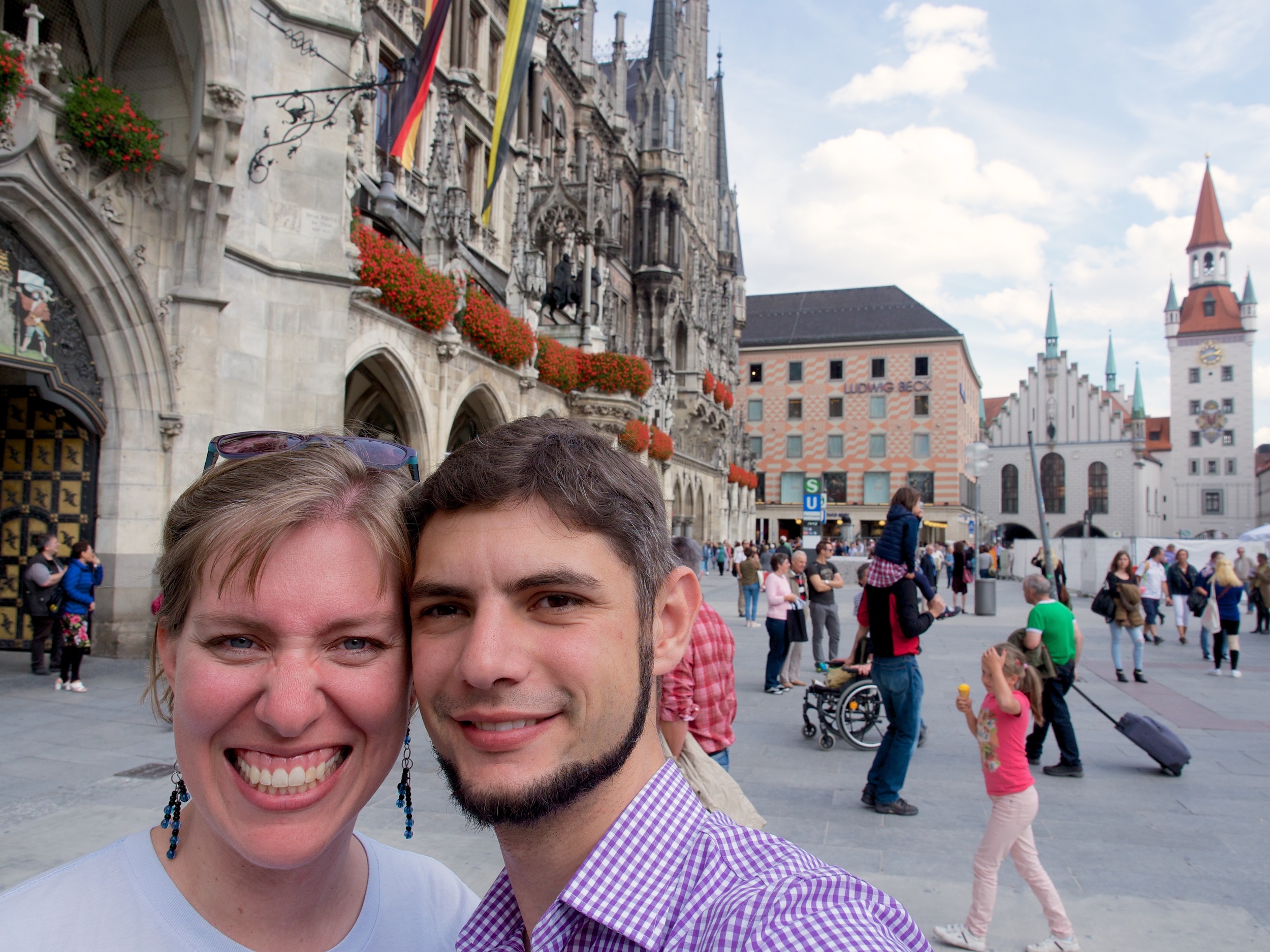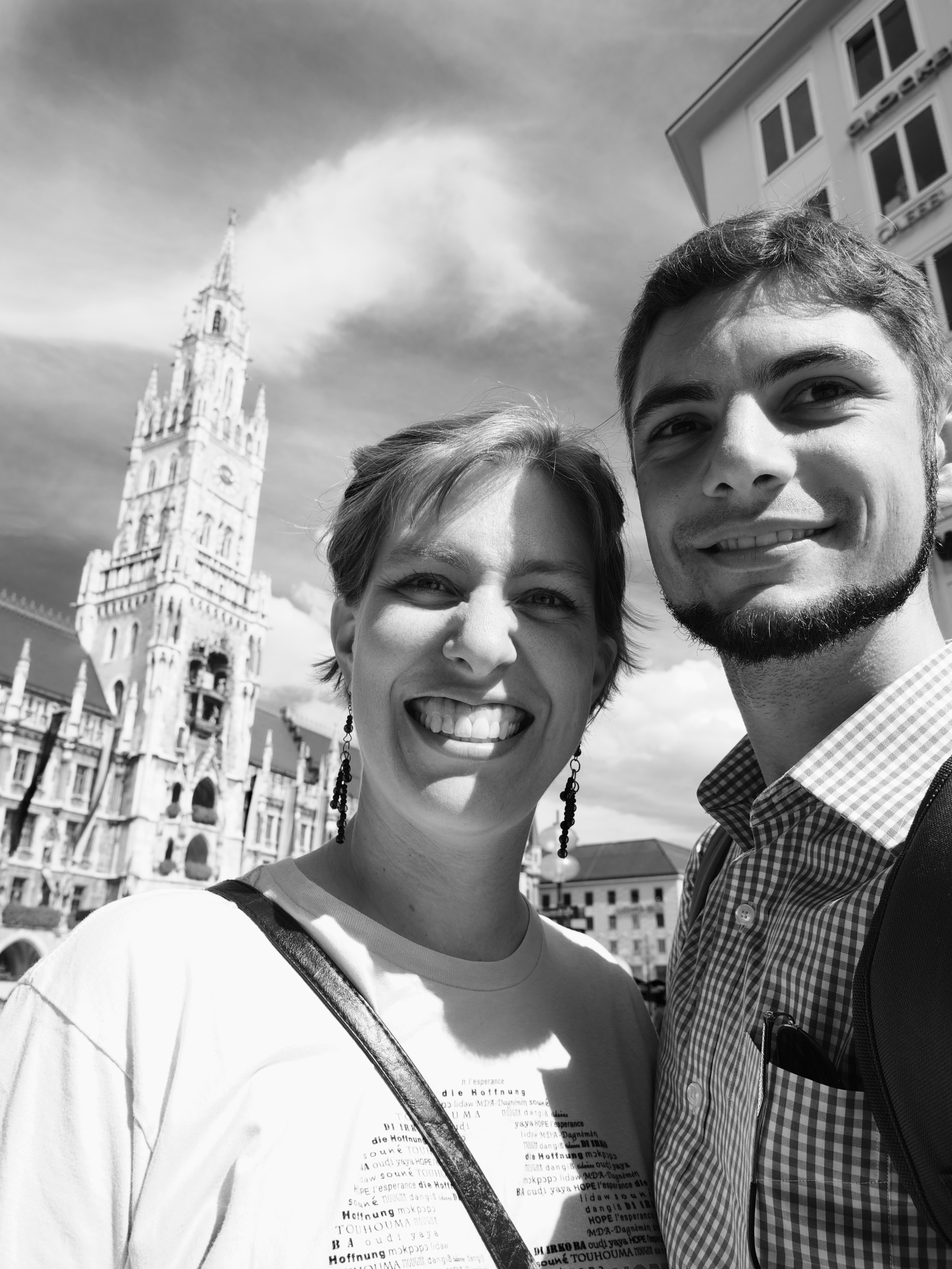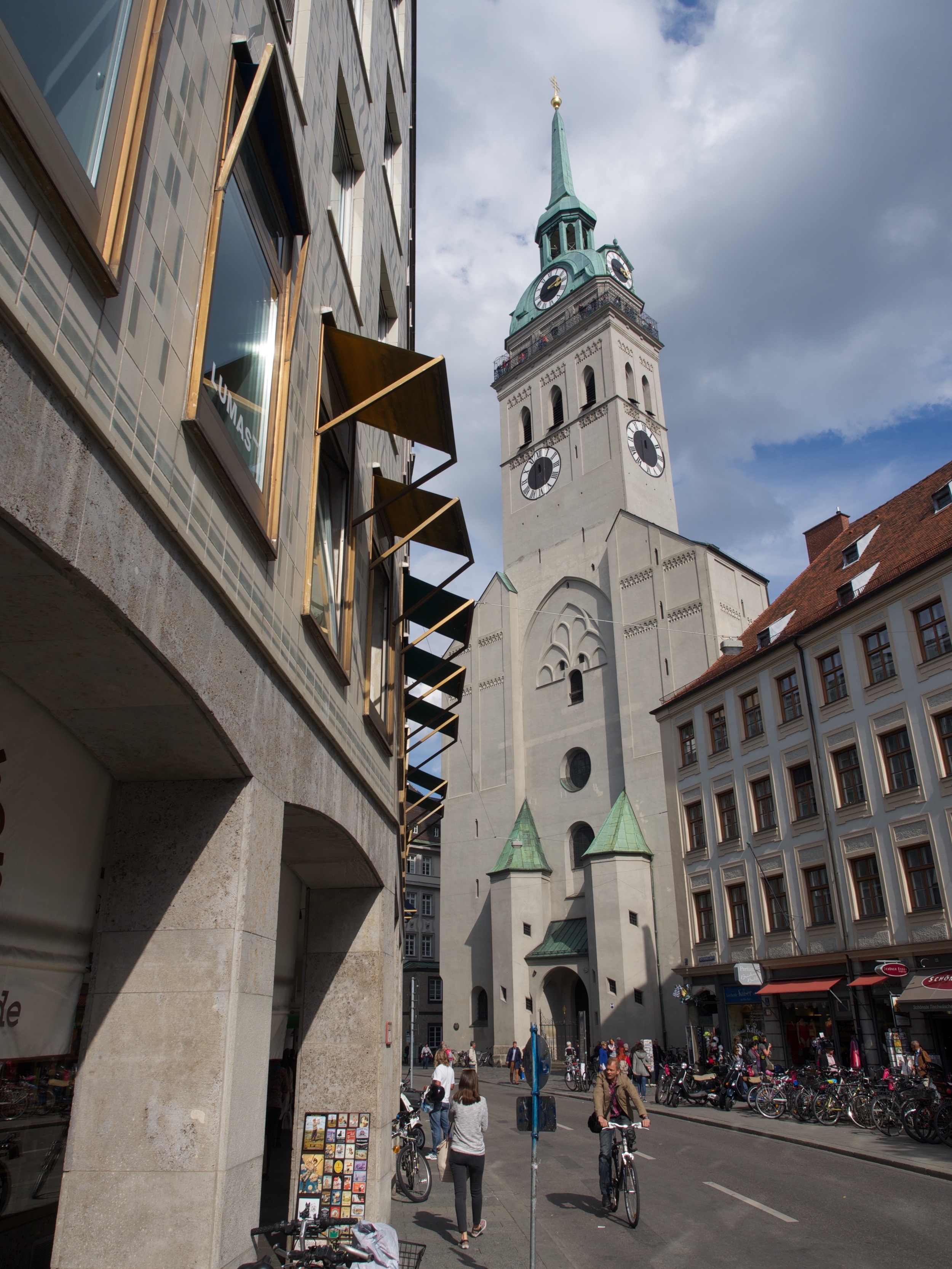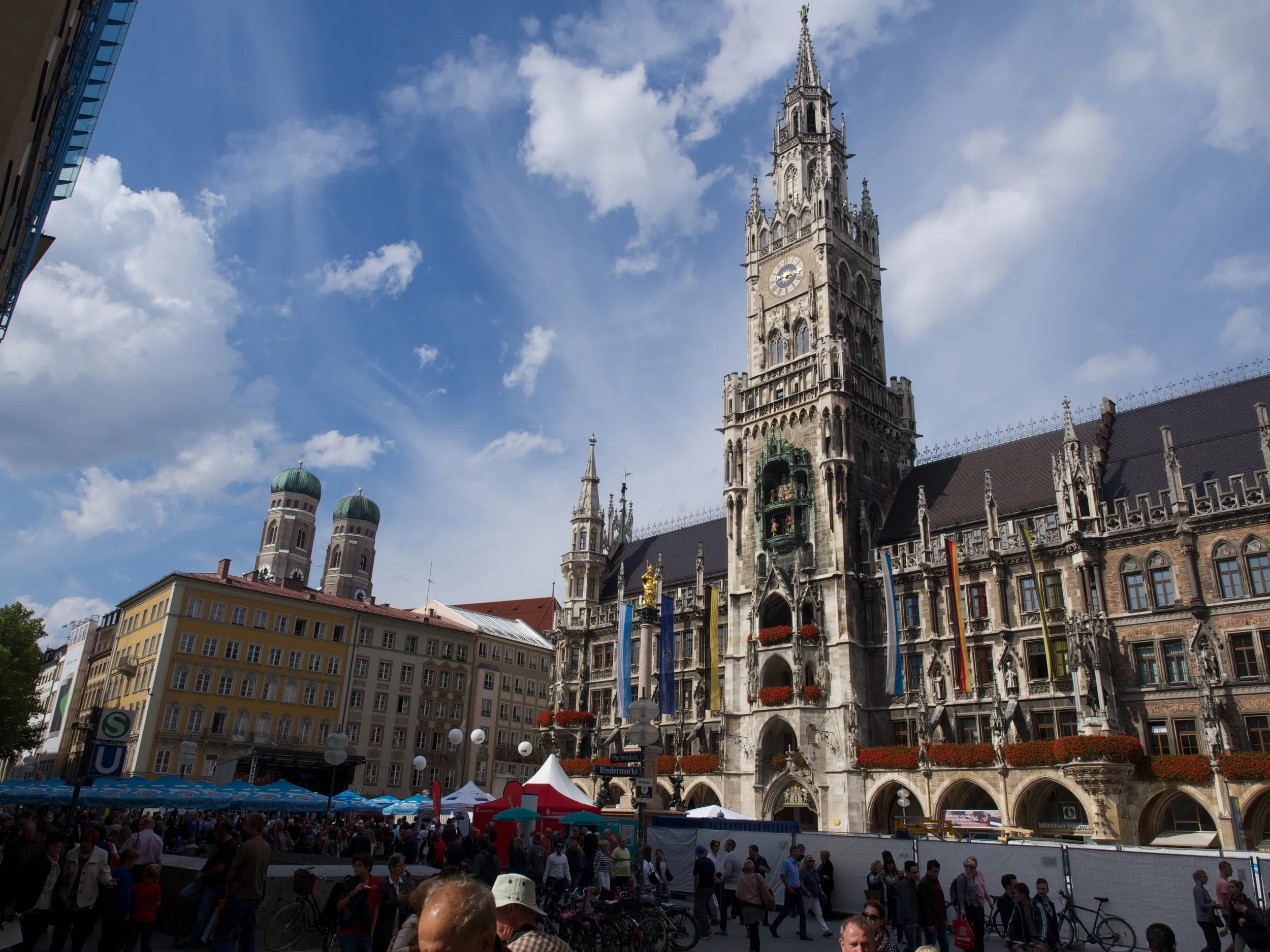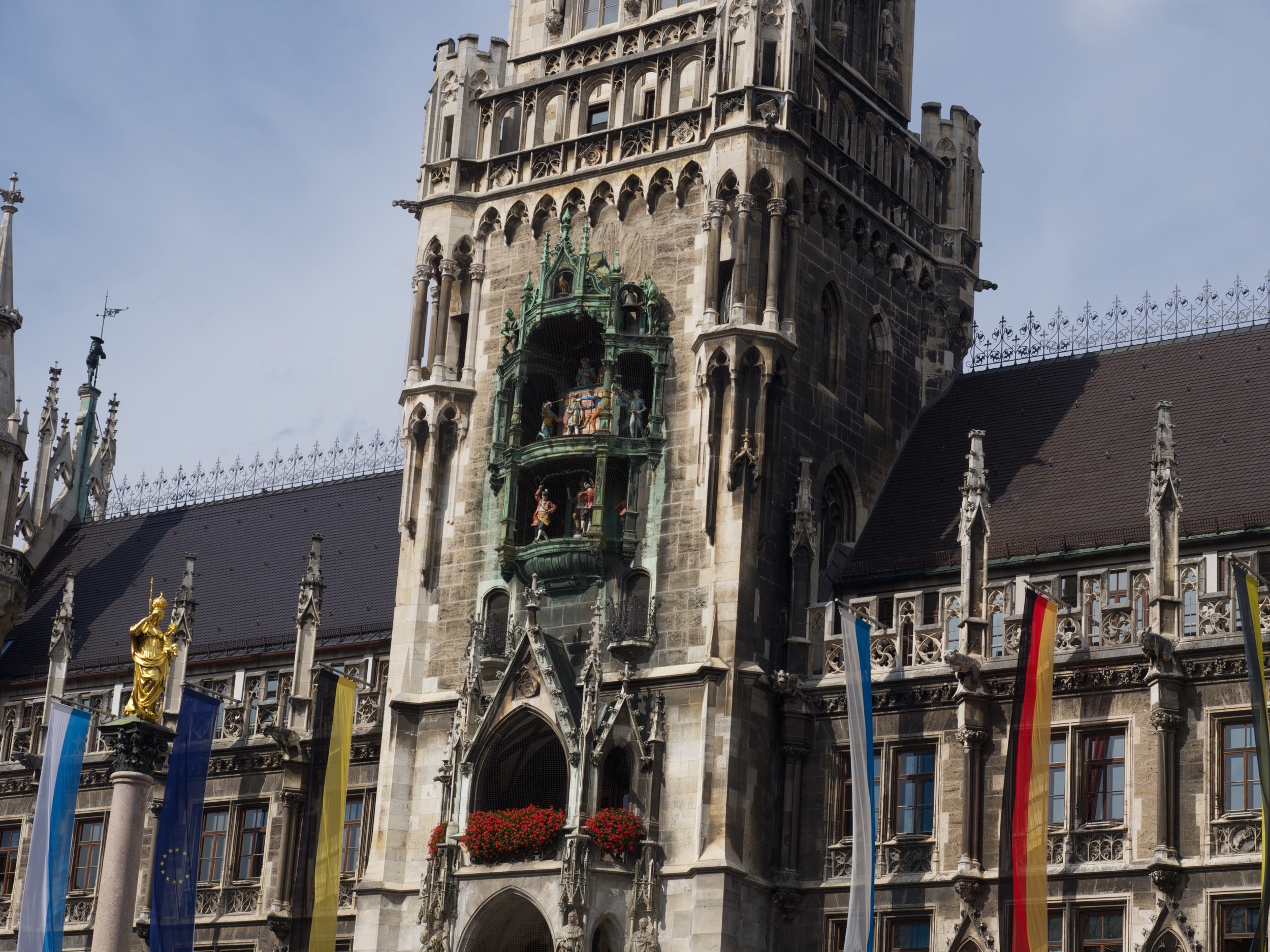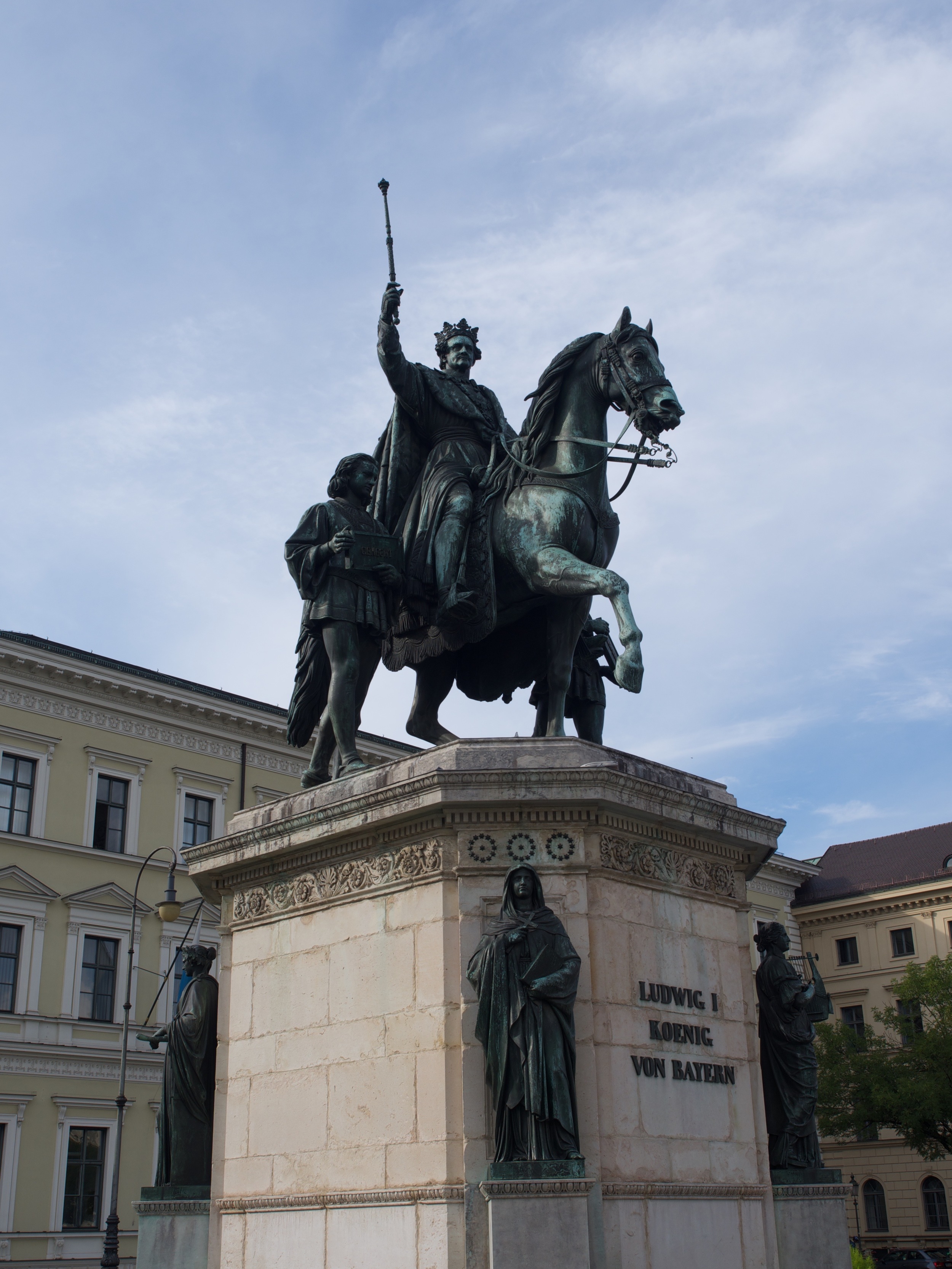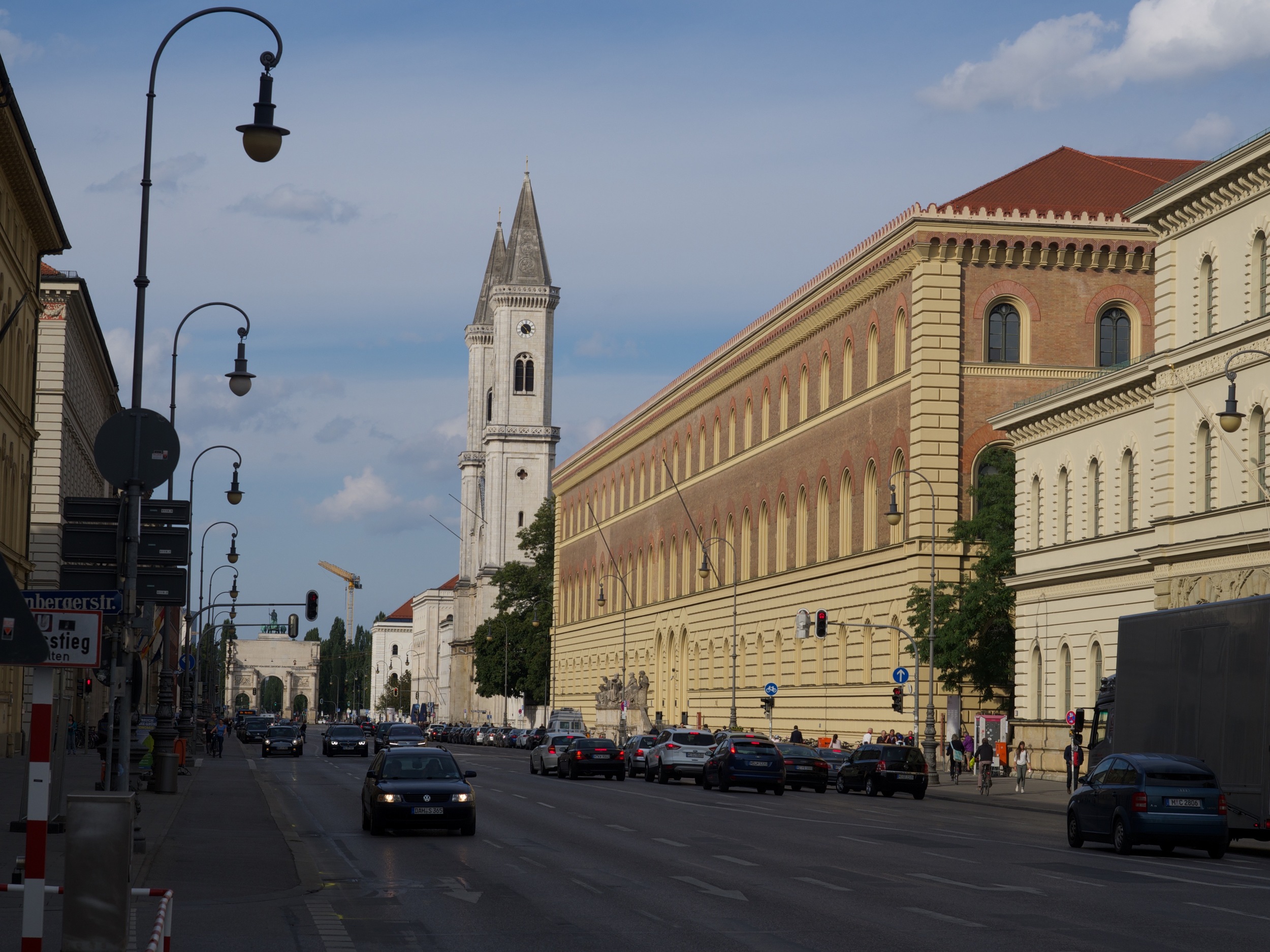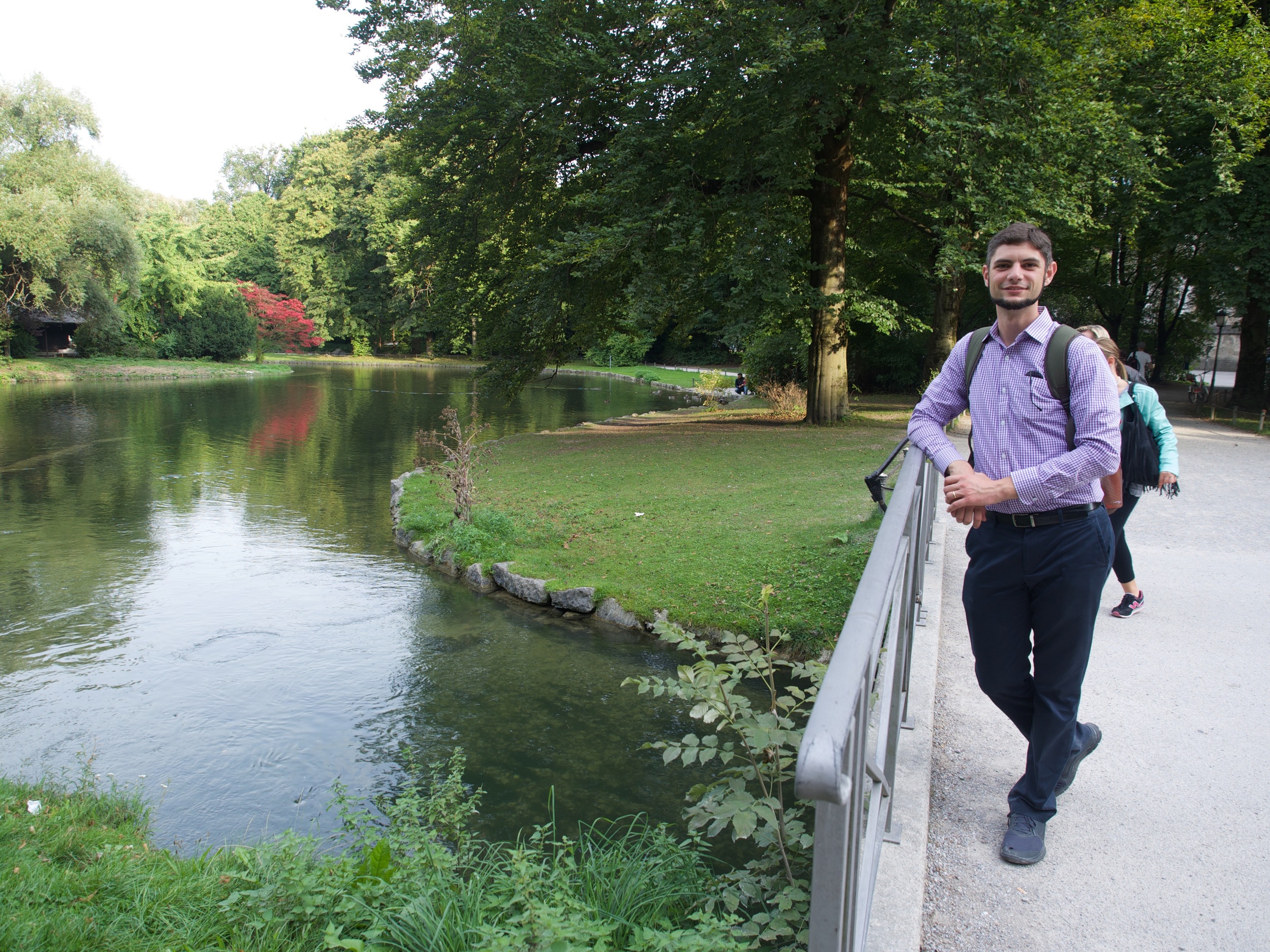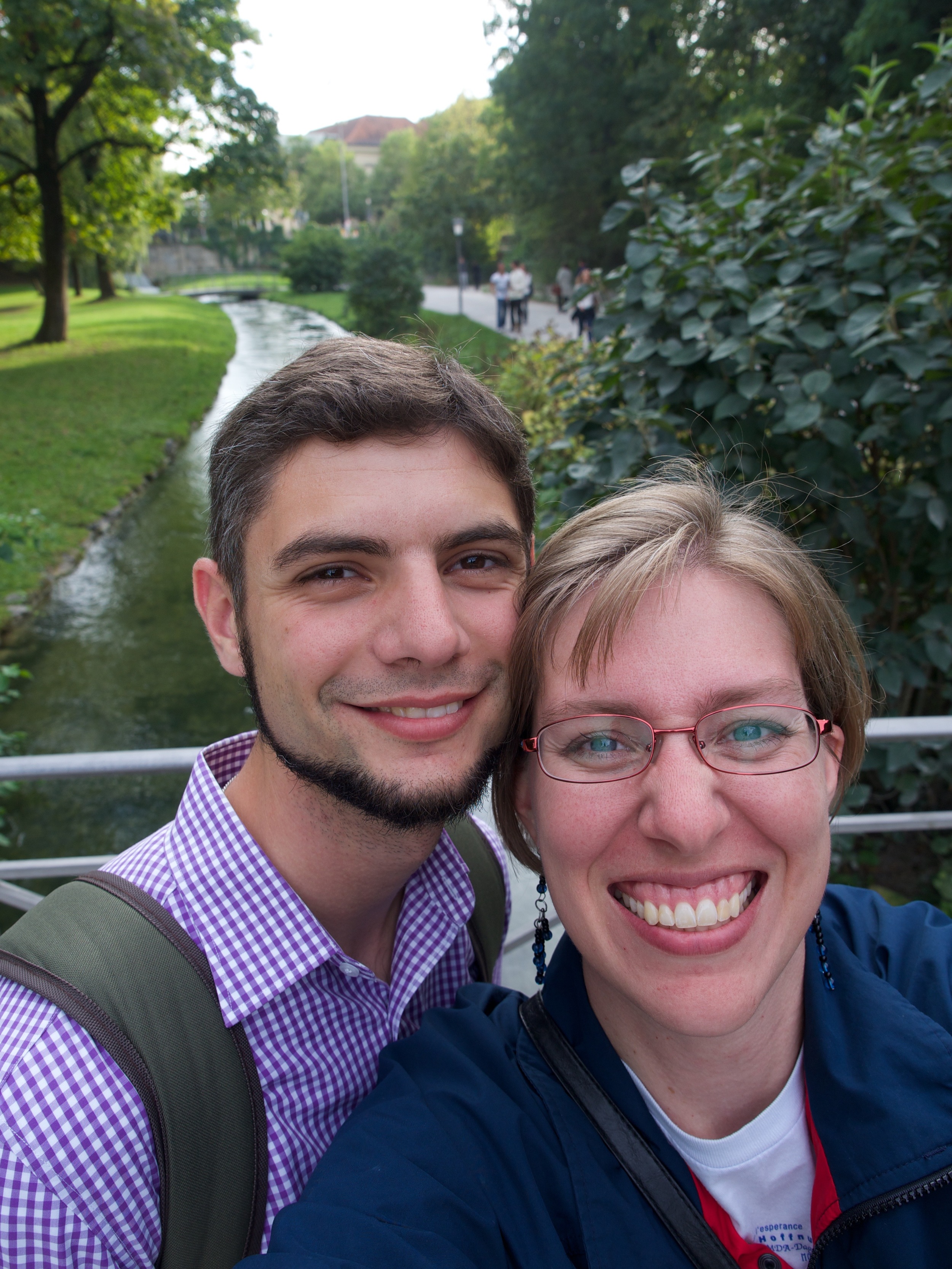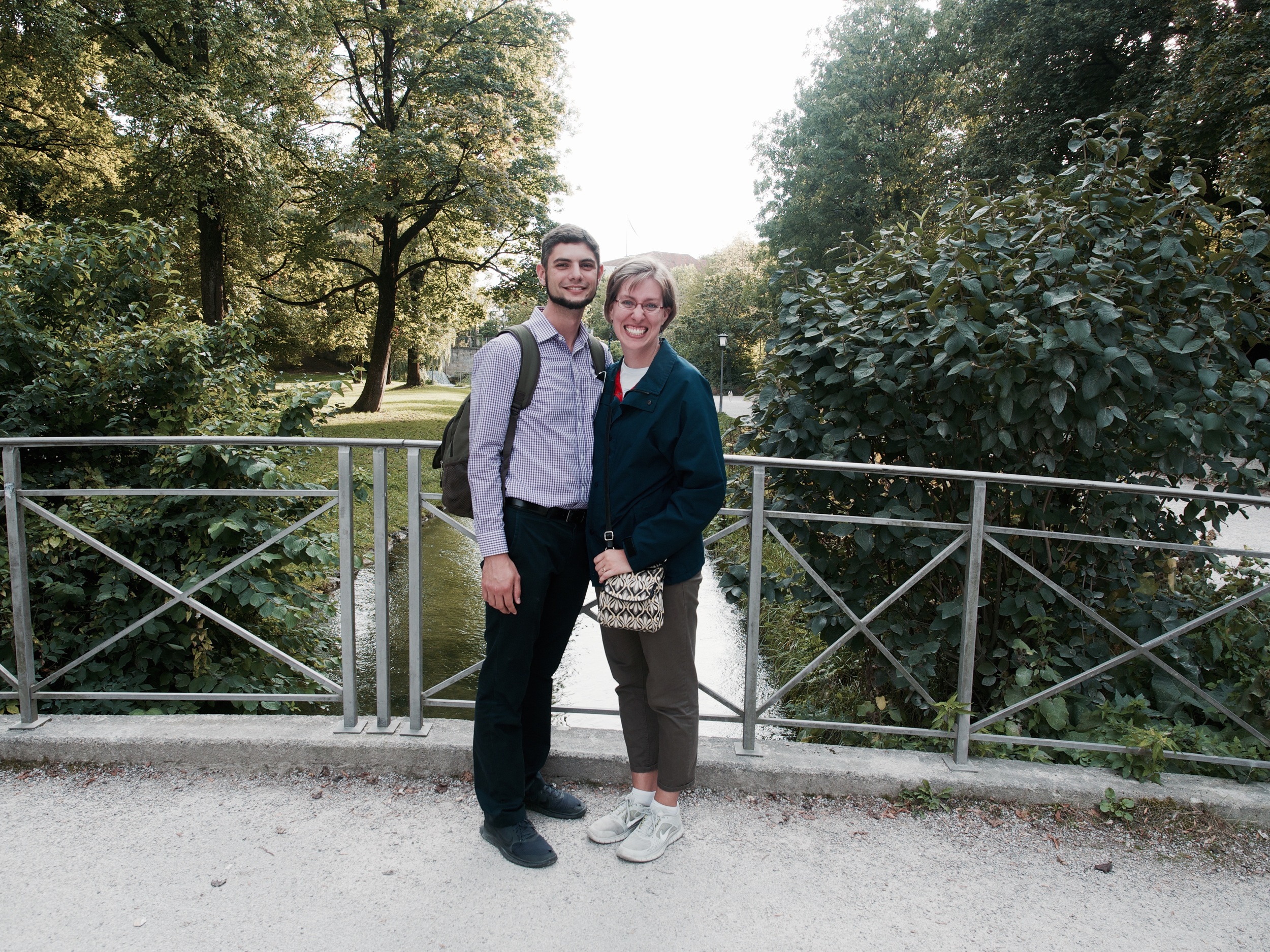I think of exploring a new city as like meeting a person for the first time. People have both superficial features and inner traits. So do cities. People have odd quirks that only make sense once you know the backstory. Likewise for cities. First impressions of people, as of cities, may not be accurate or lasting, but they’re the starting point of a relationship.
For us, landing in Munich has been something like being introduced to someone’s grandma in the kitchen just before dinnertime. She has an aged charm and a no-nonsense bustle. Practically everyone we’ve told we’re going to Munich has said, “It’s beautiful,” and it is—all the more so for its charming history, being about 900 years old. But it’s also a very modern city of 1.5 million people (almost 6 million in the metro area). So how are beautiful Munich and bustling Munich fused together as one city? That’s what I felt I began to grasp on our first day out and about town.
The day after we arrived, we decided to walk from our neighborhood all the way to the university. It would normally be about a 1.5 hour hike, but since our goal was to get to know the territory, it took us most of the day. We perused the local Aldi’s, which was not too different from ones in the U.S., except that it had a machine that automatically dispenses pastries from the bakery on the other side of the wall. (I think pastries are my new weakness!) Then we popped in a thrift store, which at the moment was mostly selling traditional Bavarian outfits (lederhosen, etc.) for Oktoberfest. Apparently, buying one of these get ups new can break the bank—second-hand ones were in the $100 ballpark.
Let me pause here to say that one of my first impressions of the city relates to the negotiated peace between pedestrians and cyclists. It was, in fact, on the evening we arrived that we discovered (through some close encounters!) that the wide sidewalks are not entirely for pedestrians. The sidewalk is usually dissected by a 1 meter strip, marked either by a row of bricks or by a different kind of pavement (such as asphalt). Suffice it to say, it’s not obvious unless you know to look for it. Turns out, this strip is actually the bike lane—or, more like, the bike expressway. Cyclists don’t expect any pedestrians to be hanging out here, so they cruise through at full speed; walkers who inadvertently step over the line are likely to get clocked hard! Once we realized this, we noticed that local pedestrians carefully avoid these lanes. Crosswalks are marked, too (and not in a self-explanatory way), to show where bikes cross vs. where pedestrians cross. Munich seems to be a very pedestrian-friendly city, but it’s even more bike friendly. I think we’re more likely to get hit by a bike than a car, and it might hurt almost as much!
Picnic spot in the Neu Rathaus courtyard
Us in Marienplatz, with the Neu Rathaus and Glockenspiel in the background. A couple times a day, medieval-looking figures in the center of this tower come out and whirl around.
Once we passed through the gate known as “Sendlinger Tor," we were definitely downtown and in the fancy shopping district. A housewares shop was our next stop; it was a bit pricey but gave Tiff some good ideas for decorations and kitchen items. Finally, we emerged into the uber-crowded Marienplatz, the best-known part of old-town Munich, and saw the famous Glockenspiel (clock tower) looking down at us from the Neu Rathaus (“New" Town Hall, built in the late 1800’s). A folk band was prepping the crowd for Oktoberfest, with the help of some ear-piercing amplifiers. Fortunately, we were able to duck into the very quiet courtyard of the Neu Rathaus, where we enjoyed the picnic we had brought with us.
I had been looking to change money all day, but apparently Germany isn’t like Ukraine or Israel, where little money changer stalls lurk near every shopping area. So when I saw a Deutsche Bank right off of Marienplatz, I tried that, only to wait in line for more than half an hour, but successfully.
With our tummies and wallets a bit fuller, we continued our trek toward the university. This took us past the Residenz, a huge palace complex of the Bavarian kings. We’ll definitely have to go back and tour that place! But the Residenz was only one of the things vying for our attention, as a not-so-regal demonstration had chosen that street to make their cause known to the city. The retinue crawling down the street consisted of a float surrounded by several police cars and demonstrators with signs. On top of the float, some young people were smoking and serenading bystanders with karaoke-quality music. When we inspected their signs more closely, we realized that the cause they were advocating was legalizing cannabis in Bavaria!
At last, we made it to the university and found the outside of the institute (think “department” in Americanese) where I’ll be hosted. There’s a cute cafe across the street with an Italian name, so we stopped in for tea and cocoa. (The latter is definitely Tiff’s weakness; they make it so delicious in Europe.) In keeping with the aura, of the place, the charming waiter insisted on speaking Italian to me, rather than German or English.
Us in the Englischer Garten.
Less than a block away is one of Munich’s best features—the Englischer Garten. It’s a huge park (larger than Central Park in NYC) that runs most of the north-south length of the city, designed by Sir Benjamin Thompson (a.k.a. Count Rumford) in 1789. The biergarten on the edge of it seems very popular, though surprisingly I saw more coffee cups at 5:30 PM than beer steins. We enjoyed strolling through a bit of the park, then made our way to the U-Bahn (metro/subway), for our short trip home.
The U-Bahn works mostly on the honor system. You buy tickets at the station entrance, and then stick them into a little blue machine that stamps them with the time and location. But there are no gates or turnstiles, which makes the traffic flow very efficient. If you happen to get caught by a roving ticket inspector without the proper ticket and stamp, you pay a hefty fine. Otherwise, you’re on your honor.
The transportation system here is truly incredible. There are intercity trains, commuter trains (S-Bahn), U-bahn, buses, and trams, all integrated into one massive and efficient network. I’d say the number of lines and the coverage is almost comparable to New York, except that it’s easier to navigate and covers less area. At this point, I don’t miss having a car one bit, except when I have to carry something heavy!
Well, there’s a little peek into some of our experiences so far. Like I said, first impressions may not be accurate, but I hope I’ve helped you get to know this busy grandma city a bit better.
Tschüs!
P.S. You might be wondering whether we’ve seen much regarding the tens of thousands of refugees flowing into the city at the moment. Actually, surprisingly, we haven’t. I suppose a lot of the activity is around the Central Train Station. When we went on Tuesday to register with the authorities, there were huge but manageable lines. One other thing, for what it’s worth: the 60-ish realtor who leased us our apartment said that, while the news reports show everyone happy about the refugees coming here, not one of his many friends takes a positive view of their arrival. So, we’re continuing to pray about the situation and how we can be involved in serving those around us.
Check out more of our Munich photos below!
